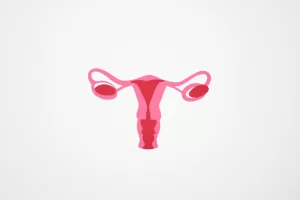 The term ovarian cyst has probably been heard by every woman because it is one of the most common diseases that can affect their reproductive system during their lifetime.
The term ovarian cyst has probably been heard by every woman because it is one of the most common diseases that can affect their reproductive system during their lifetime.
This is a benign disease that develops in the ovaries, but as a result, it can lead to complications if it is not taken care of in time.
While most of the time it does not pose a health risk, all women must know what an ovarian cyst is and what to do if they are diagnosed with one.
1. What is an ovarian cyst?
A cyst is a small, fluid-filled sac that forms on the ovaries and can range in size from a millimeter to five centimeters or more.
Each time a woman ovulates, a small cell or follicle forms in one of her ovaries and ruptures when the egg is mature and ready for fertilization.
If pregnancy does not occur, the follicle is absorbed naturally. However, if this process does not occur, the cell becomes a cyst.
2. Age as a factor of risk
Women are at risk of developing this condition after they reach puberty and during their childbearing years.
An ovarian cyst usually disappears with the onset of menopause, but in some cases, it may appear later.
3. Related factors
There is still no exact reason that can be identified to explain why these small cysts form in the ovaries.
However, several factors were still associated with them:
- Irregular periods
- Undergoing infertility treatment
- Hormonal imbalance
- Genetic factors
4. Main symptoms
As with other disorders related to the reproductive system, the symptoms are often confused with other, more common diseases.
The problem is that they are not always visible at an early stage, and many women prefer to ignore them.
Among them are:
- Irregular periods
- Abdominal and pelvic pain that radiates to the back or legs
- Severe pelvic pain before and during menstruation
- Vomiting and nausea
- Severe pain during intercourse
- Soreness in breast tissue
- A feeling of heaviness
- Abdominal bloating
- Pressure in the rectum or bladder
5. How to identify an ovarian cyst?
If you suspect that you have an ovarian cyst, you should have a gynecological examination and an ultrasound or MRI. If it is found, you will have a blood test to determine whether or not the cyst should be removed.
6. What treatment?
Your gynecologist will usually recommend periodic checkups to determine if the cyst is absorbing over time.
If it grows in size or causes pain or other complications, you may be offered oral contraceptives or surgery to remove it.
7. Cyst and reproduction
One of the biggest problems faced by women diagnosed with cysts is their fertility. This will usually not pose a danger to conception, but in some cases, it can prevent proper ovulation.
In addition, the cyst can enlarge and change the function of the ovaries or deform them, changing your future reproductive function.
8. It usually does not appear during menopause
A woman who has entered the menopause phase should not have any risk of developing an ovarian cyst. If she did appear, then this should be a cause for concern.
According to experts, cysts or tumors during menopause can be a serious indicator of cancer. They need a thorough examination by a doctor.
9. Polycystic ovary syndrome (PCOS)
The occurrence of cysts in different parts of the ovary, such as clusters of seven to 10 different follicles, is a condition known as polycystic ovary syndrome (PCOS).
This can be caused by difficulty ovulating, with hormonal imbalances being the main culprit.
In such cases, more care and attention are needed, because this disease is usually accompanied by changes in menstruation, infertility, excessive hair growth, and other symptoms.
In most cases, these cysts do not cause any problems and disappear on their own over time.
However, it is important to have regular medical check-ups to make sure everything is fine.
Picture Credit: Pexels
